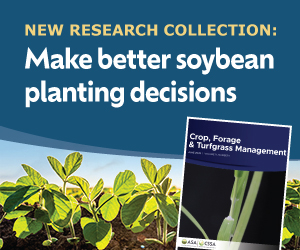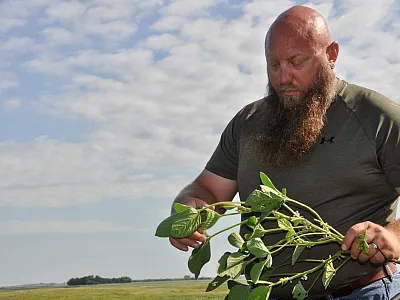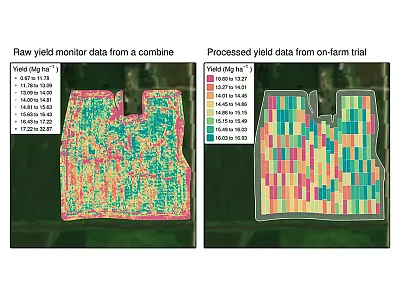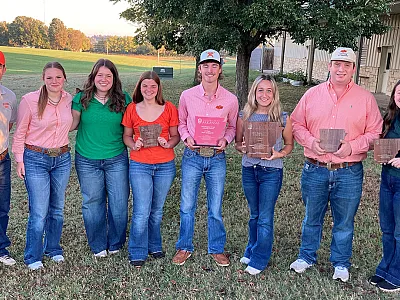Cultural Management Strategies to Reduce the Risk of Onion Bacterial Diseases
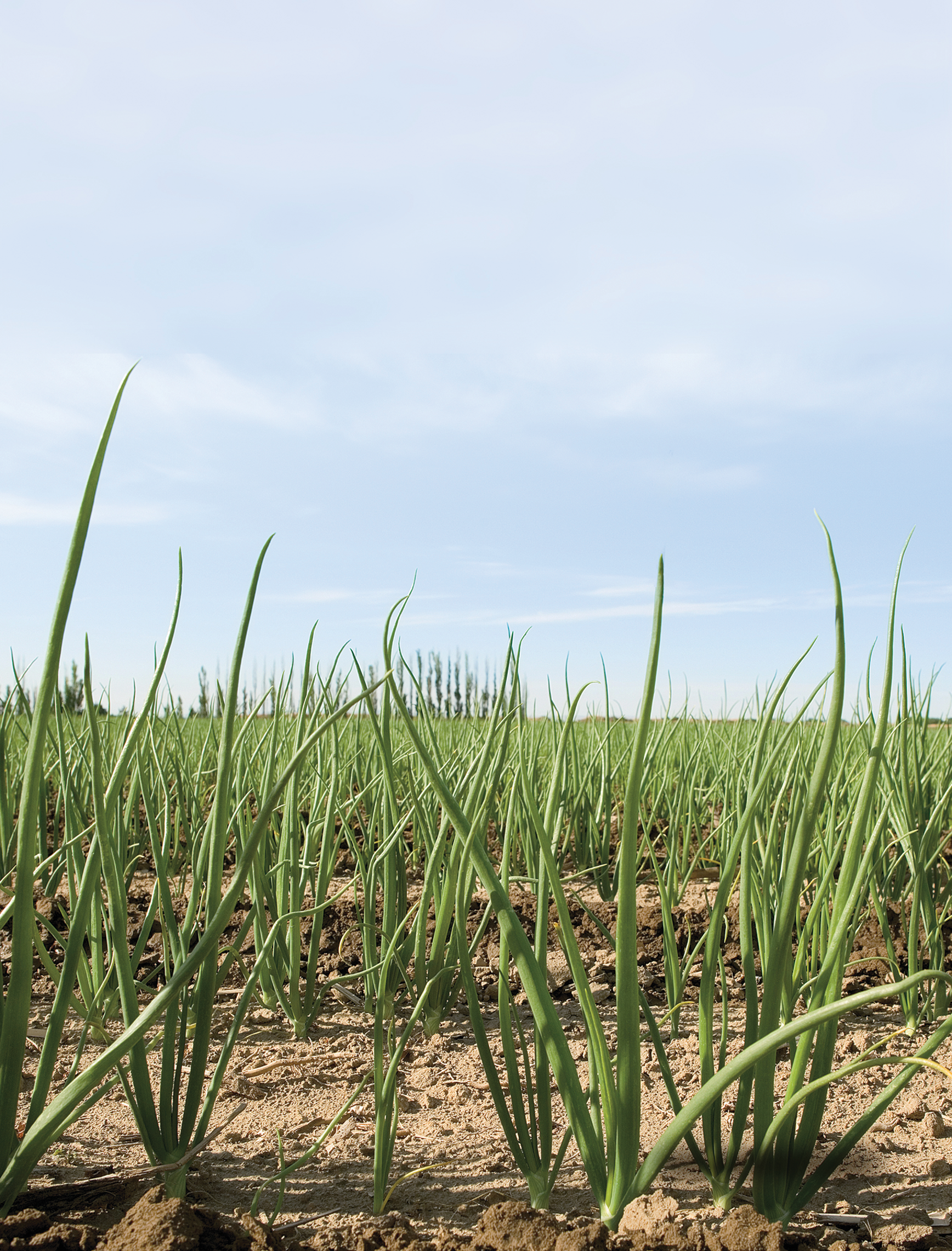
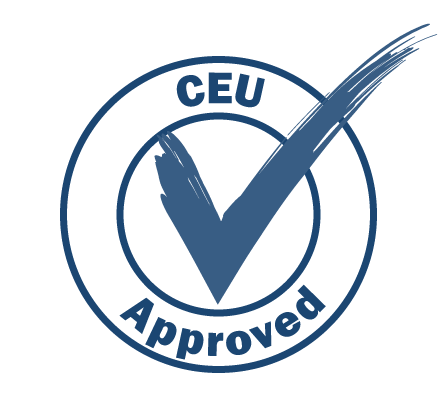
Onion production in the United States is massive in scale: 3.5 million tons of onions were produced on 130,000 acres and valued at approximately $1 billion, on average, each year from 2018 to 2022. Unfortunately, this highly valuable crop can be threatened by plant pathogenic bacteria that cause a variety of bacterial leaf blights and bulb rots, diseases for which there is no cure. An integrated approach is needed that emphasizes multiple preventative cultural management strategies to reduce the risk posed by onion bacterial diseases. Earn 0.5 CEUs in Integrated Pest Management by reading this article and taking the quiz.
Onion production in the United States is massive in scale: 3.5 million tons of onions were produced on 130,000 acres and valued at approximately $1 billion, on average, each year from 2018 to 2022 (USDA, 2023). Unfortunately, this highly valuable crop can be threatened by plant pathogenic bacteria that cause a variety of bacterial leaf blights and bulb rots, diseases for which there is no cure (Figure 1). Losses of more than 50% of production due to onion bacterial diseases have been documented under conditions that favor disease development. Given the value of this production, the magnitude of the threat, and the lack of a curative chemical control option, an integrated approach is needed that emphasizes multiple preventative cultural management strategies to reduce the risk posed by onion bacterial diseases, as highlighted in a recent review article in Agronomy Journal (Belo et al., 2023).
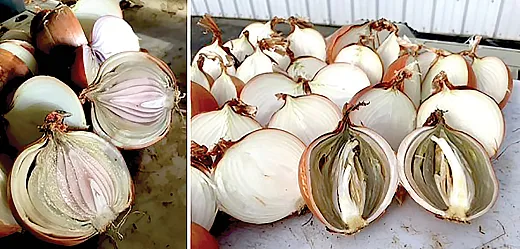
What Pathogens Cause Bacterial Diseases in Onions and Where Do They Come From?
There are many different bacteria that infect onions and cause an array of diseases, including leaf blights, soft rots, sour skin, slippery skin, center rot, leaf streak, and various bulb rots. The prevalent plant pathogenic bacteria can vary among regions of production and among seasons (Figure 2). However, the prevalence and pathogenicity of the myriad bacteria affecting onion production is an area of active research, including the “Stop the Rot” project, funded by the Specialty Crops Research Initiative of the USDA National Institute of Food and Agriculture. Broadly speaking, this project seeks to develop practical and economically viable tools for detecting and identifying bacterial pathogens of onion and optimize management strategies to reduce the risk bacterial diseases pose to onion production.

Pathogenic bacteria can come from many different sources, and the “Stop the Rot” team is working to quantify the relative contributions of these inoculum sources. Sources include thrips or other insect vectors, contaminated seed, splash‐dispersal from infected soil or irrigation water, and weeds or plant residues. Some pathogenic bacteria that infect onions can survive on many different weed species or infect alternate host crops, which highlights the prevalence of these bacterial pathogens and the difficulty of controlling them with crop rotation alone.
While onion plants can be infected by bacterial pathogens at any time during development, they are most susceptible to infection close to harvest when the pathogens more readily enter the neck of the onion plant in splashing water from rain or overhead irrigation. The bacterial pathogens colonizing the neck can then move down towards the bulb as the neck softens naturally and the leaves collapse (referred to as “tops down”). This early stage of senescence of the leaves and neck is a high‐risk period for bacterial infection as the leaves and neck start to die and have not yet dried completely, i.e., neck tissues no longer can resist bacterial infection, and there is still some moisture in the neck, which bacteria need to multiply, colonize, and move in the necks.
Can Bactericides Provide Effective Control?
Bactericides, most notably products that contain copper (Cu), are used by onion growers in many production regions, despite mixed evidence of their efficacy. Interestingly, the efficacy of these products seems to be affected by production region, possibly due to the different spectrum of prevalent bacterial pathogens in each region and the presence of genes for Cu tolerance in some populations of bacteria. For example, recent work in Georgia has shown decent control of bacterial bulb rots with applications of copper bactericides in winter‐grown sweet onions while similar trials in Washington State have shown Cu‐based bactericides to have limited or no efficacy in summer‐grown storage onions. Importantly, even in regions where copper bactericides offer some control against bacterial diseases in onion production, they are only effective when applied preventatively as they are not curative and do not move systemically in plants.
What Else Can Be Done to Reduce the Risk of Bacterial Diseases?
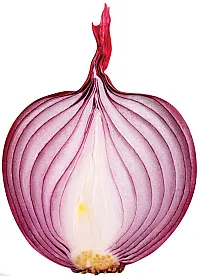
Since there are no curative treatments to control bacterial diseases, it is imperative that onion growers take a holistic approach to reducing the risk of disease development through cultural management practices. Careful management of irrigation, nutrients, and pre‐ and post‐harvest practices, including during topping, lifting, and curing, can go a long way to help reduce risk.
Irrigation: Methods, Timing, and Amount
The semi‐arid western U.S. accounts for approximately 85% of onion acreage planted nationally, and as such, irrigation management has a substantial impact on crop productivity and the risk of bacterial diseases (USDA, 2023). In these production areas that typically receive little precipitation during the growing season, irrigation methods that don't wet the plant canopy, such as drip or furrow irrigation, can reduce the prevalence of bacterial bulb rots considerably. Sprinkler irrigation can introduce into the necks of onion plants bacterial pathogens directly through splash dispersal as well as water, which keeps conditions conducive for bacterial growth.
Although the risk of bacterial disease development is greater with sprinkler irrigation, ceasing irrigation soon after the first sign of “tops down” can be an effective strategy to manage this risk under sprinkler irrigation (Figure 3). The degree to which adjusting the amount of irrigation applied or the timing of irrigation through the season can reduce the risk of bacterial diseases is less clear. Deficit irrigation within the range required to maintain desired yields did not decrease the incidence of bacterial diseases in several studies though irrigation in excess of crop requirements, especially late in the growing season, can increase the risk of bacterial diseases.
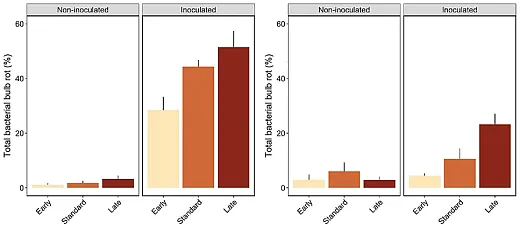
Nutrient Management
Unlike the direct role that irrigation can play in spreading bacterial pathogens and providing moisture on the plants for bacterial growth, nutrient management indirectly influences the risk of bacterial disease development by affecting onion growth. As such, the impact of nutrient management on bacterial diseases is more variable and highly context dependent. Nevertheless, several studies have shown that the incidence of bacterial bulb rot can increase with increasing N application rate. Higher N application rates can cause onion plants to develop thicker necks (“bull necks”) that take longer to cure during the critical period of tops falling over and drying.
Importantly, the total N available to the crop (not just the applied N) must be considered as high residual N or substantial N mineralization from soil organic matter may obscure the impacts of applied N rates. Similar to N application rates in excess of plant requirements, late N applications, including applications after bulb initiation, may increase the risk of bacterial bulb rots, particularly if other risk factors exist, such as late irrigations. The impacts of other aspects of nutrient management on onion bacterial diseases have received less attention, including N fertilizer sources, N fertilizer placement, or application rates for other macronutrients.
Harvest Practices
Though specific harvest practices typically vary with region, type of onions produced, and even individual growers, common practices include topping (removing the onion leaves), lifting (undercutting) the bulbs to sever the root system so that roots no longer take up water and nutrients, and curing in the field and/or after harvest. Topping can reduce bacterial bulb rot incidence if the necks are not too moist when topped and if they are left long enough after topping. Topping to a shorter neck length (<5 cm long) can increase the risk of bacterial bulb rots, particularly if weather conditions slow field curing. If topping is done manually (rather than mechanically), careful attention should be paid to ensure appropriate neck length. Lifting bulbs later during maturation (up to 90% tops down) compared with earlier lifting of bulbs, and minimizing soil disturbance during lifting, also can decrease the risk of bacterial bulb rots. Lastly, more complete curing, either from longer curing times in the field (provided temperatures aren't detrimentally hot and there is no rainfall) or postharvest forced‐air curing, further reduces the risk of bacterial bulb rots.

Conclusion
Just as there is no “silver bullet” product for chemical control of onion bacterial diseases, none of the management practices discussed above can fully prevent bacterial leaf blight and bacterial bulb rots. However, careful management of each of the factors that affect disease risk (Table 1), as appropriate for the region and production system, can go a long way toward reducing the risk of bacterial diseases in onion production.
| Management practice | Impacts on onion bacterial diseases |
|---|---|
| Irrigation | |
| Irrigation methods | Sprinkler irrigation can increase bacterial bulb rot relative to drip or furrow irrigation in arid, semi-arid, or Mediterranean climates. |
| Irrigation amount | • Deficit irrigation or reduced irrigation has not been shown to decrease bacterial bulb rots without also decreasing bulb yield. • Irrigation in excess of plant requirements could increase bacterial diseases though this has not been documented in primary research. |
| Irrigation timing | Ending irrigation at the first sign of tops down can decrease bacterial bulb rot relative to later termination. |
| N management | |
| N application rates | • Higher N application rates increased bacterial bulb rot incidence in many studies. • High residual soil N or substantial N mineralization from organic matter may obscure the effect of N application rates on bacterial bulb rot. |
| N application timing | Later N application (at or after bulb initiation) may increase bacterial bulb rot relative to applications prior to bulb initiation, particularly when other risk factors exist. |
| Harvest practices | |
| Topping | • Topping (vs. leaving foliage intact) can reduce bacterial bulb rot incidence if the necks are not too moist when topped. • However, topping too early (at the onset of tops down) can increase bacterial bulb rot compared to topping later (50 to 100% tops down) because the necks still have moisture at the onset of tops down (wounding). • Mechanical topping may reduce bacterial bulb rot relative to manual topping because of greater variation in neck lengths with manual topping. • Topping necks too short (<5 cm) increases bacterial bulb rots compared to topping for longer necks (7.5 to 12.5 cm) if there is still moisture in the necks at the time of topping. |
| Lifting | • Lifting or undercutting bulbs later (up to 90% tops down) can decrease bacterial bulb rot relative to earlier lifting. • The machinery used to lift or undercut bulbs may impact bulb rot based on the amount of soil disturbance and mechanical injury. |
| Field curing | Longer curing times under dry field conditions can decrease bacterial bulb rots. |
| Postharvest curing | Postharvest curing with forced, heated air may be necessary in areas with moist conditions close to harvest, provided the air used to cure is ≤30°C. |
Note. Adapted from Belo et al. (2023).
DIG DEEPER
This article is adapted from the recent open access review article in Agronomy Journal: “Reducing the Risk of Onion Bacterial Diseases: A Review of Cultural Management Strategies” (https://doi.org/10.1002/agj2.21301). Literature citations have been largely omitted here but are found in the original Agronomy Journal article.
References
Belo, T., du Toit, L., & LaHue, G.T. (2023). Reducing the risk of onion bacterial diseases: A review of cultural management strategies. Agronomy Journal, 115, 459–473. https://doi.org/10.1002/agj2.21301
Belo, T., du Toit, L., Waters, T., Derie, M., & LaHue, G. (2021). Effects of irrigation frequency and final irrigation timing on onion bacterial diseases in the Columbia Basin of Washington, 2020. Plant Disease Management Reports, 15, V109.
du Toit, L. J., Dutta, B., Aegerter, B., Kvitko, B., Bartolo, M., Colson, G., … & Woodhall, J. (2019). Stop the Rot. Combating onion bacterial diseases with pathogenomic tools and enhanced management strategies.
USDA National Institute of Food and Agriculture Specialty Crops Research Initiative Project No. 2019‐51181‐30013. USDA. (2023). Quick stats. USDA‐NASS. https://quickstats.nass.usda.gov/
Self-Study CEU Quiz
Earn 0.5 CEUs in Integrated Pest Management by taking the quiz. For your convenience, the quiz is printed below. The CEU can be purchased individually, or you can access as part of your Online Classroom Subscription.
- According to Figure 2, which of the following regions has the most acres dedicated to storage onions?
- Rockies.
- Southwest.
- Northeast.
- Midwest.
- Onion plants are most susceptible to bacterial pathogen infection
- at planting.
- in early summer.
- in late summer.
- close to harvest.
- There are no curative treatments to control bacterial diseases.
- True.
- False.
- Which irrigation practice can increase the risk of bacterial diseases in onion?
- Sprinkler.
- Furrow.
- Drip.
- The risk is the same among each practice.
- Which of the following harvest practices can reduce bacterial bulb rot incidence?
- Topping when the necks are very moist.
- Topping the necks to <5 cm long.
- Lifting bulbs later during maturation.
- Shorter curing times in the field.
Text © . The authors. CC BY-NC-ND 4.0. Except where otherwise noted, images are subject to copyright. Any reuse without express permission from the copyright owner is prohibited.



